Tactics, ideas and case studies.
In-store marketing is the ultimate customer magnet for brick and mortar stores. While it might seem like eCommerce platforms are always a step ahead, brick and mortar stores can offer amazing experiences to their customers right at the point of sale. This is the main benefit of in-store marketing tactics: they take place when the customer is engaged and ready to shop, unlike digital marketing tactics that might be too disruptive.
On this page, you are going to find all there is to know about in-store marketing, from the basic knowledge to the best in store marketing examples for brick and mortar stores. Let's dig in!
What goes through your mind? Do you see it as a chore or as an entertaining pastime?
Well, most people have started to raise their expectations when it comes to shopping. They don’t want to just go out, purchase an item, or fill their shopping carts, and then come back home. They want an experience.
eCommerce platforms have been offering amazing customer experiences to their shoppers. A great example is the one from Redbull. This brand is known for giving you wings. That’s why they decided to take it a step further and provide amazing trips. On their website, you can select a breathtaking experience like adventure foiling with experts. All you have to do is select the kind of trip you like. This is a great example of combining the online with the offline experience while promoting the core of the brand.
(source: https://destination.redbull.com/en/)
Now that they have received this type of experience online, customers want the same in brick and mortar shops. In-store marketing has the tools (tactics and ideas) that can help you offer your customers just what they want: products + experiences.
TABLE OF CONTENTS
In-store marketing is a type of marketing that takes place in brick and mortar shops. In-store marketing helps promote products and offer a great customer experience to the shoppers. This type of marketing focuses on engaging with customers to provide a personalized experience during the shopping session.
There are multiple in-store marketing tactics that you can use to engage with customers, personalize their experience, and ultimately increase your revenue.
Unlike eCommerce platforms, brick and mortar shops provide the possibility to engage with customers in real-time which is the key to getting shoppers’ attention. Once you have the attention of your customers, the chances of them purchasing your products increase. Nowadays, businesses focus more on digital marketing to attract people. However, once customers step foot inside a shop, their attention is not captured.
While digital marketing and brand marketing are important, in-store marketing is crucial when it comes to sales and market share. Most well-known consumer goods brands from all over the world have great in-store marketing strategies, but they lack the tools to promote their brands.
Why? Because in-store advertising solutions are old-school and lack creativity. That is why in-store marketing campaigns are not as impactful or as cool as digital marketing campaigns.
Retail marketing can be broadly categorized into three types: Non-store-based Retail Marketing, Store-based Retail Marketing, and Digital Retail Marketing. Each type has its unique strategies and channels for reaching and engaging customers. Here's a detailed overview:
Non-store-based retailing involves selling products to customers outside a traditional brick-and-mortar retail environment. It's characterized by methods that bring products directly to the customer. Key aspects include:
Store-based retail marketing focuses on selling products to customers through physical retail outlets. It encompasses various formats and strategies:
Digital retail marketing leverages online channels to reach and engage customers. It's a rapidly growing area due to the widespread use of the internet and mobile devices. Key components include:
Each type of retail marketing has its unique strengths and caters to different shopping preferences. While store-based retail provides a tactile, immediate shopping experience, digital retail offers convenience and a vast selection. Non-store-based retail, on the other hand, brings the shopping experience directly to the customer in various innovative ways. Successful retailers often integrate elements from all three types to create a comprehensive, omnichannel retail strategy.
Consumer goods brands and retailers alike need to focus on providing the best for their customers, but with all the different types of marketing and advertising messages bombarding customers, how does your brand take the spotlight? With an astonishing in-store marketing strategy!
There are a lot of reasons to put more effort into your in-store marketing strategy. With tens of types of marketing tactics, in-store marketing tends to be forgotten or simply left last on the list of priorities. However, you need in-store marketing because:
If you have a lower market share compared to your main competitors, then you are making less money, people don’t remember your brand or they just don’t engage with it.
Let’s take a real example: The global potato chips market reached a value of US$ 30 Billion in 2019 and Frito-Lay’s (owned by PepsiCo) led the category by a wide margin, with over 60 percent share of the segment. That is HUGE! Pringles, which is owned by Kellogg's, has only an 8.4% market share. How can Pringles increase its market share?
There are 3 ways in which you can increase your market share:
In-store marketing can help you take market share from competitors. Promoting your product in-store will help undecided customers to buy your product instead of the one offered by your competition. Also, convincing customers to switch from your competitor’s product to yours (or at least to try it) helps you increase your market share.
When it comes to inactive prospects, Pringles will need to convince retailers that are not selling its products to make the purchase. For instance, you will see that Lay’s and Frito chips are available in most grocery shops, while Pringles are offered mostly by bigger retailers. The way the product is marketed and distributed might also have an impact on this.
Finally, acquiring a competitor is a more costly strategy that will help you increase your market share. For instance, in our case, Pringles could acquire Utz Chips, another competitor with less market share. Of course, this is the last resort for brands because it takes a while and it is mostly a business-let decision instead of a pure marketing decision.
Another issue nowadays is that there are so many brands and products available to the customers. How can they make a decision, especially once they step foot inside a brick and mortar store and they see so much variety?
Let’s say that it is easier to make an informed decision when you buy a smartphone online. You have a price range and 5 different smartphones to choose from (in that price range). You have different guides, websites that can help you make features’ comparison, and videos that will show you how to use the product.
When it comes to fast-moving consumer goods, it is difficult to choose. This is why in-store marketing is essential. For instance, when a customer goes to the body spray area of the supermarket, she sees at least 10 brands, not to mention the fragrances and labels. By adopting a good in-store advertising campaign you will be able to differentiate yourself from the competition.
Another issue that can be tackled with in-store marketing is the lack of visibility. You know that it’s hard to increase product visibility when there are so many other great products fighting over the attention of the shopper. Here’s when in-store marketing steps in to help.
In order to increase the visibility of your product, you will need to make your product attractive. For this, you can rely on the design and colors of the packaging. If you are located in the United States of America, Industrial Packaging can help you outsource your packaging project to make sure that your products attract the attention of shoppers. Also, digital displays and banners can help customers see your product first, which will lead to better overall brand visibility.
Taking into account the COVID-19 crisis, customers want to buy the bare minimum, so they focus on essential products. If your brand is in the premium or leisure section of the store, your sales might be going down.
In-store marketing can help you increase revenue. For instance, in-store promotions will make people think twice before skipping on a great sale. You can benefit from in-store promotions to boost upsells and cross-sells.
COVID-19 has a big impact on retailers and brands that sell exclusively in stores. While eCommerce is blooming, brick and mortar shops are losing money every day. Some countries even closed brick and mortar stores, leaving only some grocery shops that sell essential products (food, cleaning products, drugs).
People are scared to shop in supermarket so they rely more on online stores and delivery. This is why you need to make the experience of your existing, loyal customers your top priority. Human contact is not encouraged and neither are product samples. However, you can choose robots like Tokinomo to help you take the spotlight and offer your customers a real-time connection without health concerns.
Who can benefit the most from in-store marketing? Well, in-store marketing is important for:
Fast-moving consumer goods (FMCG) brands are the ones who can leverage in-store marketing the most. Apart from in-store promotions, which can help brands upsell (sell a more expensive, similar product) and cross-sell (sell other complementary products - toothpaste and toothbrush), in-store marketing can help them promote their product effectively to consumers.
FMCG brands will benefit from in-store marketing in different ways, including an increase in revenue and in market share. Also, brand awareness has an important role because this is how consumers become loyal customers.
Retailers need to offer their customers an amazing experience and in-store marketing can help them with this hard task. Customer expectations are growing every year. Considering the fact that eCommerce platforms tend to offer a better customer experience because they can gather data from users and find exactly what they want, brick and mortar shops need to keep up.
One in-store marketing tactic that can help is free Wi-Fi. Customers will need to log in and the retailers will be able to gather their data. This way, they will know what their interests are, and they can even target them in their digital marketing campaigns.
Needless to say, marketing agencies that focus on offline marketing such as in-store promotions are another category that can benefit from this type of advertising.
Agencies need to keep up with trends and offer retailers and brands their best services. However, while the online marketplace is full of innovative solutions, most offline marketing solutions lack creativity. This is why in-store marketing agencies need to think outside the box and try solutions like Tokinomo, the most innovative brand activation technology.
“A Tokinomo advertising robot on your shelf will draw attention to the product and provide an entirely new way of brand communication at sales points. Tokinomo’s interactive approach is explosive, memorable, and highly effective. The robot uses a motion sensor to detect buyers that approach the shelf to create a spontaneous interaction that provokes immediate interest and engagement. - read more”
Eva Williams
Fixthephoto.com
In-store marketing comes with a lot of benefits when it’s done right. It’s not all about selling and increasing market share, it’s about more than that - retailtainment: offering memorable amazing experiences to your customers.
Some of the most important benefits of in-store marketing are:
For example, online, you see an ad on Facebook, you click on the link and you purchase a product, in an ideal scenario, of course. But what makes you want to purchase a product from that store again? Is it the banner or the delivery? Is it the copy or is it the hand-written letter you received along with the product?
People need to connect with brands, to feel and touch the products before making the purchase. 72% of customers consider the in-store experience the most important channel when making a purchase.
By promoting in-store you offer something that eCommerce lacks: a real connection. Customers have the opportunity to see the products in real life and find out which one is the best for them.
The Internet is a really crowded place for a brand to show its true potential. Customers are bombarded each day with ads from different businesses, but once they enter a physical store, the advertising seems to stop or is just too dull to be noticed.
In the eCommerce era, you need to invest in in-store marketing to deliver at every touchpoint. From online to offline, from their computers to their physical shopping carts. Brands and retailers need to make sure that they are close to their customers every step of the way, on every channel with the help of omnichannel retail.
In-store marketing offers you the opportunity to tell your brand’s story and to let customers engage and relate to that story. While most believe that storytelling is just for the online space, brick and mortar shops have the advantage - real-time connections. Tell your story on all channels. Start online, build in-store!
With in-store marketing, you have the opportunity to show that your brand is eco-friendly, for instance. Nowadays, customers are inclined to purchase ecological products that protect the Planet. With an in-supermarket advertising campaign, you can show how your brand focuses on sustainability and bio products.
Globally, more than a third (40%) of respondents are purpose-driven consumers, who select brands based on how well they align with their personal beliefs. Consumers are increasingly choosing products that are eco-friendly, transparent and in line with their values.
Stats show that 70% of customers make their final purchase in brick and mortar shops, not online. They might search for products online, read reviews, connect with the brand on social media, but they still go out to shops and make the purchase there.
Once they are in-store, they see the products they need from different brands. There are shelves full of soap, so why would they choose your soap? It’s simple: you’ve got their attention with your in-store advertising campaign!
Also, think about how many people go shopping just to look around, to entertain themselves. These people are not there to buy a certain product, they are there to see what’s new. You can capture their attention with your new in-supermarket promotions.
You can use in-store marketing to educate your customers as well. It’s not always about revenue, it’s also about awareness and education. Once customers enter the shop, you have the opportunity to share a piece of your world with them.
For instance, let’s say that you are a brand that sells sunflower oil. A simple banner or aisle blade where you explain why it is important for people to avoid throwing away oil down the drain will show that you care about the Planet and about the safety of your customers.
Retailers need to be able to provide an amazing experience to their customers. Brakus et al. building upon Schmitt (1999) identification of five sensory experiences (i.e., think, feel, sense, relate, and act), proposed four dimensions of brand experiences: affective, behavioral, sensory, and intellectual experiences. These experiences inspire emotional bonds and lasting impressions in consumers, leading to the success of branding efforts.
With the help of in-store marketing, you can offer a better shopper experience to your customers. How so? Music, free Wi-Fi, digital display, and robots! Maybe even scent!
In-store promotions can help you leverage impulse buying.
Did you know that over 40% of customers who buy from brick-and-mortar supermarkets spend more than they planned?
This is your chance to convince people to buy your products along with what’s on their grocery list.
Now that we’ve seen what in-store marketing is and how it can help, let’s dig deeper and find out what are the main in-store marketing tools and tactics you can use to grow your brand or your retail business.
Like we’ve mentioned previously, there are a lot of tools and solutions that can help you promote your products and your business in-store. However, most of these tools and solutions are old-school and they lack creativity.
Let’s see which are the main tools you can use in your in-store marketing strategy.
As you probably know, the 4 P’s in marketing are product, price, place, and promotion. All of these P’s are essential for in-store marketing. When it comes to the first P, you can select the way your product looks, from the label, name, design to the casing or bottling it has.
For the price, you can focus either on a bigger price to show that it is a premium product or offer discounts to attract more customers.
Well, the place stands for the location in which the product is marketed and sold. However, it is not just about the store itself, the placement inside the supermarket is also important. For instance, if your product is put on the bottom shelf or the top shelf. Also, it depends on how many shelf facings your product has. The more, the bigger the visibility.
This is why it’s important to check that your products are placed in front, centered and that you have as many shelf facings as possible.
Price promotion is one of the most used in-store tactics. You can lower the price of the product (offer a discount), give 50% off for the second product purchased, or offer buy 1, get 1 promo. Actually, more than 20% of the revenue is spent on trade promotions and more than 55% of them are not successful.
You might be wondering what is a good discount percentage for your products. Apparently, for customers, there are 3 sweet spots: 20%, 33%, and 50%. Anything that is higher than 60% seems false and customers wonder if the product is up to standards. Anything lower than 10% is not going to catch their attention.
No matter what type of price promo you choose, it is important to measure the results of the promotion. How can you measure the results of your promotion?
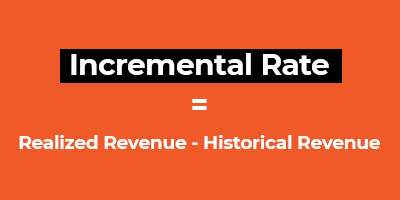
With this formula, you will be able to spot the change in sales resulting from promotions. Using historical sales data as a baseline you will be able to see the change. Let’s say that your product costs $10 and you normally sell 100 products per week. Your historical revenue/week is $1000.
During the promotion, you sell 120 products per week, but your product now costs $8. This means your realized revenue is just $960. In this case, your promotion was not as successful as it has a negative incremental rate. If more than 150 products had been sold during the promo (1 week) your incremental rate would have been $200 instead of -$40.
Another formula that can show you how your promotion went is to calculate marginal ROI.
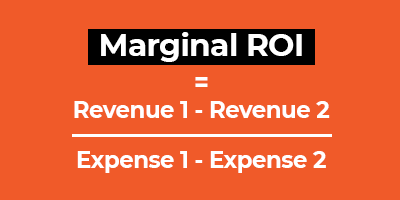
Calculating standard ROI might not give you a clear picture of how well (or badly) your promotion performed. A standard ROI is measured by dividing whole revenue to expenses over a period of time. However, you might adjust the promotion over time which means your marginal ROI changes because your expenses and your revenue suffer changes.
Let’s take the same example as above: Your product costs $8 (you reduced it) and you sell 100 products in the first week of the promo which means you have a revenue of $800. However, this promotion costs you (displays and banners) $120 per week. After the first week, you decide to add another banner which raises the expenses to $200. Your revenue in the second week also increases to $1200.
Revenue 1 = $1200 (second week revenue)
Revenue 2 = $800 (first week revenue)
Expense 1 = $200 (expenses from second week)
Expense 2 = $120 (expenses from first week)
Your marginal return on investment is: 500% (which is amazing)
However, let’s say that you see that the promotion is working and you spend more on advertising. You add more banners near your product which increases your weekly expense to $450, but your revenue is only $1280.
Revenue 1 = $1280 (third week revenue)
Revenue 2 = $1200 (second week revenue)
Expense 1 = $450 (expenses from third week)
Expense 2 = $200 (expenses from second week)
Your new marginal ROI is going to be only 32% (which is really low).
This shows that you invested too much in advertising your promotion and it’s time to cut some of the expenses before your whole promotion becomes inefficient.
In-store displays are all of the items used to showcase a product, outfit, new merchandise or to demonstrate the use of a product. It’s not just a simple banner or a digital display, it’s about a combination of items located all over the store.
For instance, some of the best performing displays are in-store end caps. These end caps are great for product visibility and since they are at the end of the aisle, they will be noticed first. Floor graphics are also very interesting and they attract more attention than you might expect. Why? Because less customers expect to see a product advertisement on the floor.
However, there are different types of in-store displays. Some of them are more creative, like dump bins, while others are just simple pieces of cardboard with a message. Measuring the results of in-store displays is not an easy task. There are a few things that you can look at, but you can’t have a clear picture.
For instance, you can look at foot traffic. Is it increasing, especially near the new displays? Also, are people stopping and checking out the products? Are they buying them?
People won’t buy what they can’t taste, right? A simple product sample can help them make up their mind. If they like your product they will be convinced and they will buy it, even though it wasn’t on their product list.
Nowadays, taking into account COVID-19 regulations, food samples are prohibited which means you will need to think about a different strategy. But keep it in mind for better, safer times.
Organizing an event can take a lot of time and effort, but it can pay off in the long run. There are many types of events you can host to attract customers and to encourage them to purchase different products.
An in-store event can help you engage with customers and make them trust and connect with your brand. 69% of consumers believe attending live experiences helps them connect better with the brand, their friends, and their community.
Events are also a great way to promote a small shop. With an in store event, you will be able to draw attention to your small business and create connections with people who are going to become your loyal customers. When your small shop is ready for customers, host a grand opening event. During this event you can show the products, tell the story of your store and connect with potential customers.
Customers are no longer stopping by when you put on a new banner or display? This is because they are flooded with ads everywhere we go. Online, in-store, on the streets, on buildings, at the park, on TV, on the radio, and the list can go on.
Customers are no longer disrupted by old-school in-store marketing tactics. This is why most in-store campaigns don’t have the expected results. People are not paying attention.
But how can you make them turn around and check out your product? With the help of robots!
While a few years ago robots were just an appearance in Sci-Fi movies, nowadays they are real and AI can become a true asset for all businesses.
Apart from the fact that it can help factories create and deliver more products, robots can also be used in trade marketing. How?
In various ways actually:
Nowadays there are a few robots that can greet customers at the entrance of the supermarket, offer details about certain products to customers and direct them to a certain aisle.
Instead of having employees walk on every aisle multiple times a day, a robot can now stroll down and report when stock is not sufficient. Also, these robots can add products on higher shelves, which employees might be unable to access.
The most important one for in-store marketing is definitely this robot. An in-store marketing robot can help promote your products in a more creative way.
If you are tired of using the same old-school in-store marketing tools and solutions, Tokinomo is the right choice for your marketing strategy.
Tokinomo is a complex in-store marketing solution that has a combination of lights, sound, and motion technologies. These technologies allow you to design amazing experiences for your customers and great promotions for your products.
Now that you know your options when it comes to in-store marketing, let’s see how you can offer an amazing experience to your customers the moment they stepped foot in-store.
As we’ve established earlier customers are demanding more: they want an experience!
With the right tools, strategy, effort, and commitment, you can offer them just that. We believe that a few tips and tricks might come in handy for your in-store marketing strategy going forward.
Some things that you might not take into consideration can make or break the experience of your customers. Let’s see what you need to focus on to create an amazing experience with shopper marketing.
When you go to a party or when you attend an event, you will observe that the organizer sets out the mood with lighting, music, and other tools. When it comes to a supermarket, you can set out the mood with some chill music so that customers could spend more time relaxing and strolling away in all of the aisles.
If your regular audience is made out of young people, you should turn to the top records of the year. Music is a great tool for stores to dictate how fast (or slow) people buy.
The scent is also important. Make sure to display products correctly and to keep them all fresh. Nobody wants to go grocery shopping in a store where something doesn’t smell quite right.
Also, everything needs to be spotless! Sometimes customers accidentally stumble upon shelves that can make soda bottles or other liquids fall on the floor. This can ruin the shopping experience of another shopper.
Even for clothing shops, every piece of merchandise needs to be in its place, neatly folded.
While it might not seem like a big deal, we all use Wi-Fi all day, every day. Why not use it inside the store? It’s easier for customers to send pictures of different products and get the opinion of their loved ones. Also, people tend to spend more time in a place that has Wi-Fi.
Using a complex in-store marketing solution like Tokinomo can help you offer an amazing experience to your customers. Tokinomo can make products come to life, tell their story, and engage with shoppers. With the help of light, sound, and movement, Tokinomo catches the attention of the customer which leads to better sales and brand trust.
Customer service in a store is essential! Make sure that all of your staff is trained and that they know how to answer all of the questions customers might have. It is important to put the customer first and to keep an eye on the behavior of the employees. We all have bad days, but that shouldn’t reflect on the interaction between a shopper and an employee.
Train cashiers to be attentive, oriented to details, and a bit of a salesperson. Sometimes, customers might be too shy to ask for what they need. This is why employees need to be helpful and approachable. However, they should avoid being too pushy.
This is an amazing way to give your customers the feeling that they are special. A loyalty card that comes with perks and benefits after they purchase a certain amount is a great way to make customers come back for more.
Also, referral programs are great. Customers can refer your store to their friends and receive a better offer or a product in exchange.
Customers want to be able to access your products both offline and online. Some people might not have the time to come and walk all over the store for a few items. That’s why you should connect your physical store with an online platform or app. A click and collect option is great. People can take a look at the products, add them in the online cart and come back later to get all of them in your store.
You can also post all of your offers online and this will attract more people to your store. If it’s easier to access, it’s easier to attract.
After spending quite some time inside your supermarket, customers just want to pay and take all of their products home to enjoy them. However, long lines at the checkout can ruin the whole shopping experience. Their feet hurt, kids are crying, the line seems even longer, their products appear to be heavier. Nobody wants that!
Also, don’t forget that people can see how long the queue is even when they enter the store. You don’t want customers to turn around and leave before they purchased anything.
Self-check-out is a great idea. People can scan their products, pay with cash or card, and leave the store happy.
Now that you have the knowledge and the tools, all you need is some inspiration.
To motivate you, let’s take a look at the greatest in-store marketing campaigns.
For retailers and brands seeking to enhance their physical store presence, it's important to consider a variety of innovative marketing strategies aimed at enriching the customer's in-store experience and boosting product and brand visibility. These strategies not only elevate in-store engagement but can also significantly increase foot traffic.
Consider these seven dynamic strategies for your physical retail outlets:
Dynamic In-Store Product Showcasing: Elevate the appeal of your products by implementing compelling in-store displays. Ensure your inventory is not only appealing but also thoughtfully arranged to catch the customer's eye. This encompasses everything from the storefront presentation to in-store product arrangements, right down to the checkout area.
Key tactics include:
Eye-Catching Window Displays: Utilize your storefront windows as a canvas to attract passersby with engaging displays. Regularly update these displays, particularly during peak shopping seasons, to maintain freshness and interest. Tailor these designs to resonate with your target customer base, possibly incorporating thematic storytelling to enhance engagement.
Strategic Curbside Promotions: Leverage the space outside your store for curbside displays to catch the attention of pedestrians. Use this space to advertise specials and promotions, keeping the displays clean, engaging, and frequently updated.
Empowering Your Sales Team: Invest in advanced sales training for your staff, ensuring they are well-versed in your products. Enable them to effectively upsell and cross-sell, thereby enhancing the customer shopping experience and increasing sales.
Collaborative Partnerships: Form alliances with local businesses or complementary brands to expand your customer base. This could range from mutual promotional arrangements with neighboring stores to collaborating on events with local charities, aligning with your brand values.
Interactive In-Store or Virtual Events: Organize engaging events, either within the store or virtually, to create memorable experiences for customers. This could be an effective way to introduce new products or celebrate seasonal occasions.
Reward and Referral Schemes: Implement customer loyalty and referral programs to encourage repeat visits and word-of-mouth marketing.
By adopting these diverse and dynamic retail marketing strategies, brands and retailers can significantly enhance the in-store experience, fostering greater brand loyalty and driving sales growth.
Supermarkets have a unique opportunity to engage with a wide range of customers through various advertising methods. Here are some innovative supermarket advertising ideas:
In just 14 days of campaign, Jacobs Kronung managed to increase sales by 140% without making any changes to the price. With a creative in-store promotional solution like Tokinomo, brands can expect similar results.
Dalben Supermercados wanted to engage with customers during Halloween and showcase Coca-Cola’s products at the point of sale. With the help of Tokinomo Shelfobot, Coca-Cola managed to turn its Fanta products to life inside various stores.
This campaign was implemented in Brazil, in Dalben Supermercados, thanks to Tokinomo’s partner, Creative Display. For 15 days, shoppers could interact with spooky Fanta bottles in Brazilian stores.
Want to see how the campaign looked? Check it out:
To raise awareness about Tomi’s latest content, Orkla tested out Visibubble. For 30 days, Visibubble shared Tomi’s message in 50 Kaufland stores in Romania.
Take a look at how the campaign looked:
Ardealul is another well-known brand from Orkla. This brand is known for its laid-back attitude. For this campaign, Orkla wanted to share more about Ardealul’s app that allows shoppers to win prizes.
For 30 days, Visibubble attracted shoppers' attention towards Ardealul products in 33 Auchan stores in Romania.
Here’s how the campaign looked:
LEGO is known for its creativity so it’s not hard to see why it chose Visibubble for its campaign in-store. To promote its DREAMZzz products, LEGO implemented a campaign with Tokinomo Visibubble in 33 Auchan and 17 Noriel stores for 1 month.
Take a sneak peek at the campaign:
Auchan wanted to promote its private-label brand of coffee in-store. To do it in a creative way, the retailer tested out Visibubble. The campaign was implemented in 1 Auchan store for 30 days by Tokinomo’s distributor IPP Romania.
This is how the campaign looked:
Viper is the first brand of hard seltzer in Romania. Asahi Group, the brand that produces the hard seltzer wanted to have a 360° launch. However, they wanted to have a more innovative in-store marketing approach. That's why they chose Tokinomo. Apart from generating trial among shoppers, the campaign also brought an increase of 60% in sales.
Using displays to catch the eye of customers is another great idea and Old Spice became creative with this one. They managed to showcase the benefits of the product and also offer customers a great experience.
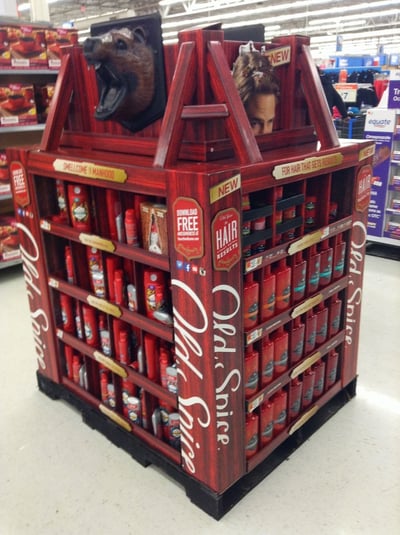
(Source: https://www.flickr.com/photos/jeepersmedia/12462459174)
Johnnie Walker took it a step further and connected with customers by taking advantage of real-time marketing. People were going crazy about Game of Thrones and Johnnie Walker decided to attract people with a special display featuring none other than a White Walker.
(Source: https://www.thebigchilli.com/news/celebrate-game-of-thrones-in-style-with-white-walker-by-johnnie-walker-and-game-of-thronesr-single-malt-whisky-collection)
Want to sell a product? Teach the customer how to use it! This is exactly what this arts and crafts superstore retail chain did. While they were not promoting their store directly, they promoted an amazing product from the store.
By showing kids how to create a Slime, they were catching their attention and offering parents a moment of peace.
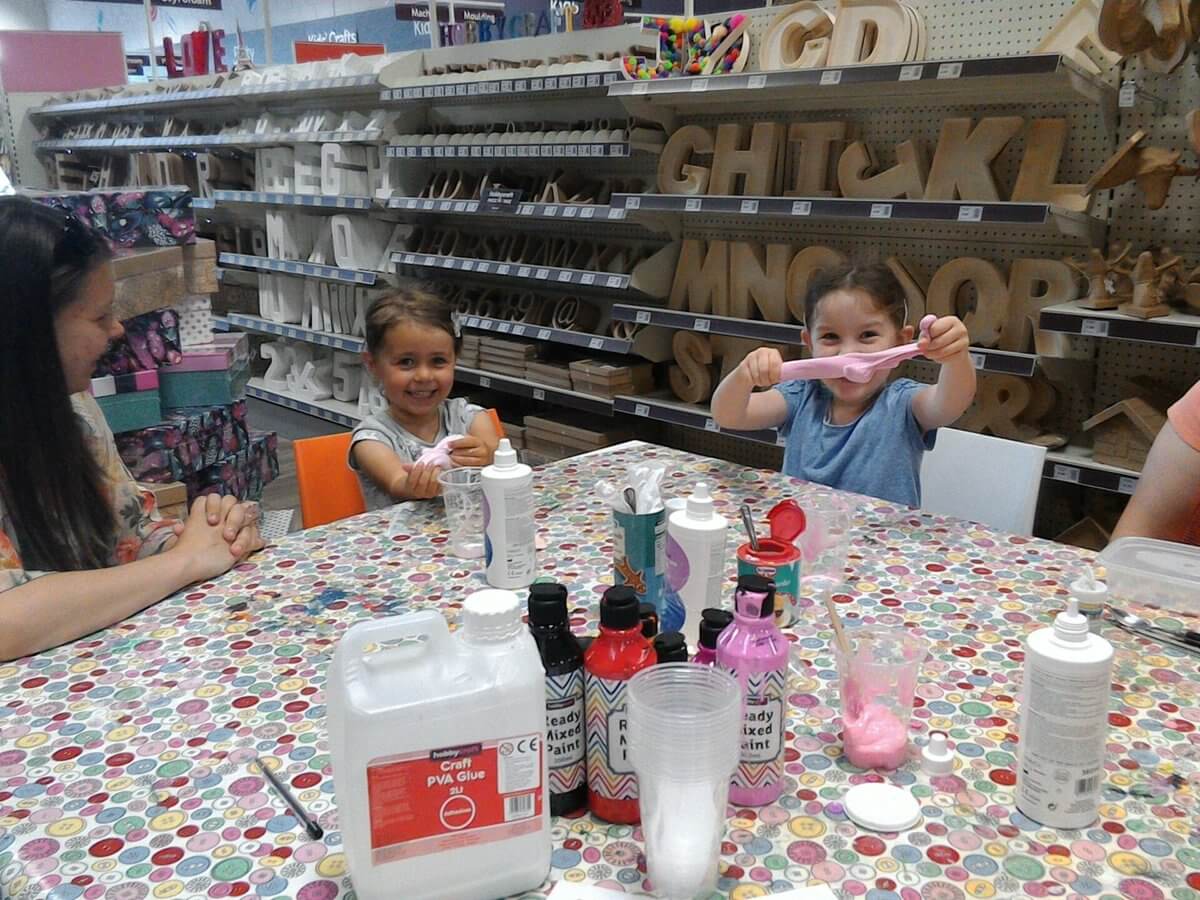
(Source: https://twitter.com/Hobbycraft_MHL/status/1003248767611691008/photo/1)
With the help of light, motion, and sound, Tide and Ariel managed to grab the attention of shoppers in-store. The two products talked and shoppers were curious to find out more. See how the campaign looked:
As you could see from this video, people stepped out of airplane mode (the one we all enter when we have to go grocery shopping) and into a fun mode.
Do you feel that old in-store marketing tactics don't work anymore? Are you dreaming about something disruptive, modern and digital to promote your brand? Then you're in the right place. Tokinomo is an award-winning shelf advertising solution chosen by top FMCG brands like Coca-Cola, P&G, Unilever, Heineken and so many others. Drop us a line and let's talk about your next successful in-store marketing campaign that everybody is going to talk about!
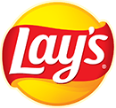


@2x.png)
@2x.png)





©Tokinomo. Copyright 2024. All Rights Reserved. Patent awarded A201500317, Patent pending A201900056
Terms & Conditions - Privacy Policy
©Tokinomo. Copyright 2024. All Rights Reserved. Patent awarded A201500317, Patent pending A201900056
Terms & Conditions - Privacy Policy